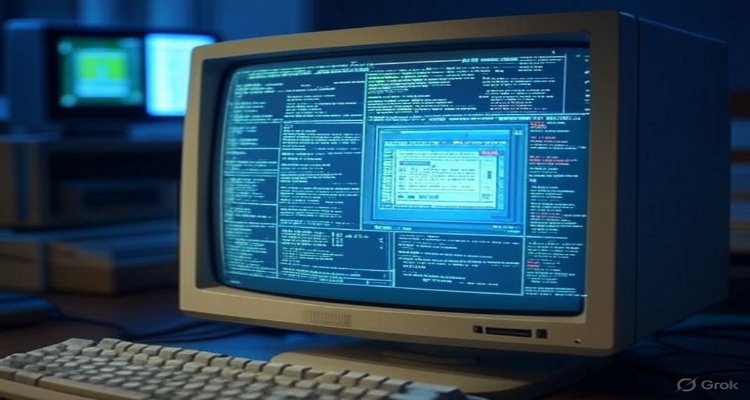The Internet’s Lost Files: Digital Artifacts from the Early Web
Exploring forgotten websites, broken links, and vanished online spaces that shaped the early internet—digital artifacts now lost to time.
Introduction
In the mid-1990s, when the web was young, every click felt like stepping into uncharted territory. Pages loaded slowly, images appeared pixel by pixel, and hyperlinks were like portals into hidden worlds. Yet, much of that early internet—the digital bulletin boards, experimental personal websites, and quirky homepages—has vanished into the void. What remains are fragments, “digital artifacts” preserved in archives, old hard drives, or memory alone.
Today, as we browse sleek apps and endless streams of algorithm-driven content, the lost files of the early web raise an important question: what happens when digital history disappears?
Context & Background: The Birth of the Web
The World Wide Web officially launched in 1991, and by the mid-90s it was exploding with creativity. Students, hobbyists, and entrepreneurs built websites that felt personal, raw, and experimental. From early chatrooms like IRC to Geocities neighborhoods and AOL forums, digital communities flourished in chaotic, colorful ways.
Unlike print newspapers or libraries, however, the internet lacked a clear preservation system. Websites went offline when hosting fees weren’t paid, formats became obsolete, and once-popular platforms shut down without warning. A report from the Pew Research Center in 2019 estimated that a significant portion of early digital culture—blog posts, message boards, and niche sites—no longer exists in any accessible form.
This loss is now often referred to as “digital decay” or “link rot.”
Main Developments: Digital Artifacts and Their Importance
Digital artifacts from the early web are more than curiosities—they are cultural fossils. They reveal how society first adapted to life online:
- The First Blogs: Personal diaries hosted on platforms like LiveJournal and Xanga offered glimpses into everyday lives before social media reshaped online expression.
- Forgotten Forums: Communities on Usenet or early gaming boards nurtured conversations that influenced internet culture and slang still in use today.
- Geocities & Angelfire Sites: Amateur-designed homepages, filled with GIFs and glittering text, documented the aesthetics of the time.
- Early News & Politics: Original reporting, campaign websites, and independent journalism from the early 2000s are now hard to trace.
The fragility of these artifacts matters. Without preservation, the collective memory of the internet risks erasure.
Expert Insight & Public Reaction
Digital historians have sounded the alarm for years. Jason Scott, archivist with the nonprofit Internet Archive, once noted: “The average website lasts about 100 days before it’s either changed or taken down. That’s our history vanishing in real time.”
The Internet Archive’s Wayback Machine has preserved billions of pages, but even it has limits. Some files were never captured; others relied on now-obsolete formats. Critics argue that while corporations obsess over monetizing the web, too little is invested in saving it.
Meanwhile, nostalgia fuels public interest. Reddit communities and digital archaeology projects attempt to resurface lost files, with users sharing screenshots, old CD-ROMs, and rediscovered code. For many, recovering these artifacts feels like reconnecting with their digital childhood.
Impact & Implications
The disappearance of the early web is not just about nostalgia—it carries broader consequences:
- Cultural Loss: Without access to original sites, future generations may misinterpret or oversimplify internet history.
- Research Gaps: Academics studying digital sociology or media history face incomplete archives.
- Legal & Political Concerns: Important government documents, early campaign materials, and news reporting can vanish, complicating accountability.
- Corporate Control: As a handful of tech giants dominate today’s platforms, the openness of early digital culture risks being forgotten.
The push for digital preservation has led to new initiatives. Universities, libraries, and independent projects are racing to save what’s left—from floppy disks to broken websites—before it’s too late.
Conclusion
The lost files of the internet remind us that digital history is far from permanent. Just as ancient civilizations left behind pottery shards and cave paintings, our online age leaves behind broken links, forgotten GIFs, and archived forums. Preserving these artifacts isn’t only about nostalgia—it’s about safeguarding the cultural DNA of the digital era.
As the web moves forward into AI-driven platforms, immersive VR, and new forms of communication, the question lingers: will today’s internet survive for tomorrow’s historians—or fade into the same silence as the early web?
Disclaimer : This article is for informational and educational purposes. It reflects research-based insights into digital preservation and should not be considered technical or legal advice.











